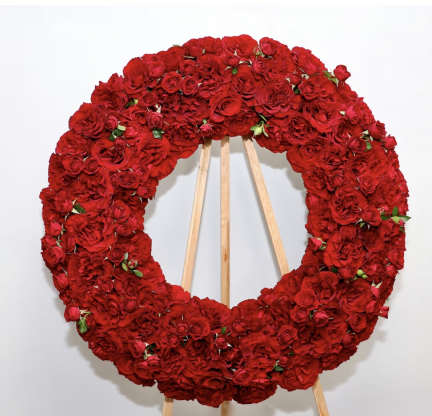A Florist’s Guide to Funeral Floral Arrangements: Honoring Life with Beauty and Grace
Flowers have long served as symbols of love, remembrance, and reverence during life’s most meaningful moments—and perhaps none more poignantly than at a funeral. As a florist, crafting floral arrangements for a memorial service is a privilege and a responsibility. These tributes are more than decoration; they are heartfelt expressions of sympathy, comfort, and respect.
In this guide, we explore everything the general public should know about funeral floral arrangements—from types and meanings to etiquette and personalization. Whether you are choosing flowers for a loved one or helping a friend make a thoughtful decision, this guide offers insight into honoring life with grace and beauty.
1. The Language of Sympathy Flowers
Every flower carries a message. In times of grief, that message becomes especially important. Understanding the symbolism behind funeral flowers helps ensure your arrangement resonates with the emotions you wish to convey.
Popular Funeral Flowers and Their Meanings
-
Lilies – Often associated with funerals, lilies symbolize the soul’s peaceful return to innocence and purity.
-
Roses – Elegant and emotional, roses vary in meaning by color:
-
Red: love and respect
-
White: reverence, purity
-
Yellow: friendship
-
Pink: grace and admiration
-
-
Chrysanthemums – In many cultures, especially in Europe and Asia, chrysanthemums are used exclusively for funerals and symbolize honor and grief.
-
Carnations – These long-lasting flowers symbolize remembrance and are commonly used in sprays and wreaths.
-
Orchids – Exotic and timeless, orchids express everlasting love. White and pink varieties are common for sympathy arrangements.
-
Gladiolus – These tall, striking blooms represent strength of character, moral integrity, and sincerity.
The Meaning of Color in Sympathy Flowers
Color also plays a vital role in setting the emotional tone:
-
White: purity, peace, and reverence
-
Red: love, respect, courage
-
Pink: sympathy, grace, compassion
-
Blue: serenity, comfort, calm
-
Yellow: remembrance, warmth, friendship
-
Purple: dignity, sorrow, spiritual healing
2. Types of Funeral Floral Arrangements
Funeral arrangements come in many forms, each suited for different purposes and placements. Here are the most common styles:
Casket Sprays
-
Full casket sprays cover the entire casket and are typically chosen by immediate family members.
-
Half casket sprays are used when the casket is open for viewing, often covering the lower half.
Standing Sprays and Wreaths
-
Standing sprays are displayed on easels and placed near the casket or at the entrance.
-
Wreaths symbolize the cycle of life and eternity. They are often circular but can also come in hearts or crosses.
Baskets and Vase Arrangements
-
Ideal for friends, coworkers, or extended family.
-
These are versatile and can be sent directly to the service or the family’s home afterward.
Hearts, Crosses, and Custom Shapes
-
Symbolic shapes add a personal touch and may reflect the deceased’s beliefs or passions.
-
Custom tributes may be designed in the shape of a hobby (e.g., a musical note, golf club, or angel).
Graveside and Memorial Arrangements
-
After the service, floral tributes may be placed at the grave or cremation site.
-
Some choose potted plants or seasonal arrangements that can last longer outdoors.
3. Choosing the Right Arrangement
The relationship you had with the deceased—and their family—should guide the choice of floral arrangement.
For Immediate Family
Casket sprays, standing sprays, and large floral tributes are generally reserved for spouses, children, or parents.
For Friends or Extended Family
A tasteful vase arrangement, basket, or small standing spray is appropriate. Consider the person’s personality, favorite colors, or any shared memories when selecting flowers.
For Coworkers, Neighbors, and Acquaintances
Simple and respectful is best. A small sympathy bouquet or basket delivered to the family’s home is both thoughtful and unobtrusive.
Religious and Cultural Considerations
Not all cultures or faiths include flowers in their funeral customs. For example:
-
Jewish funerals often avoid flowers entirely in favor of charitable donations.
-
Muslim services may include white flowers but avoid extravagant displays.
-
Hindu services typically welcome flowers, often marigolds and roses.
-
Christian services vary, but flowers are generally encouraged.
Day of the service: Check with the funeral home about delivery times.
After the service: Sending sympathy flowers or a plant to the home is a kind gesture that acknowledges ongoing grief.
Where to Send Them
-
Funeral home: Ensure flowers arrive in time for the visitation or ceremony.
-
Place of worship: Confirm they accept deliveries and know the schedule.
-
Graveside: Coordinate with the family or cemetery for placement.
-
Home: Sympathy flowers or plants delivered to the family’s home offer lasting comfort.
What to Say on a Sympathy Card
Keep it brief, sincere, and respectful. Examples:
-
“With heartfelt sympathy and love.”
-
“In loving memory of a beautiful soul.”
-
“Thinking of you during this time of sorrow.”
“You are not alone.”
“Your loved one mattered.”
Avoid floral foam, which is non-biodegradable. Ask your florist for foam-free designs.
Use natural materials such as jute ribbon, raffia, or reusable containers.
Opt for potted plants or living arrangements, which can be taken home or planted in memory.
Conclusion: Honoring a Life with Grace
Funeral flowers are more than a tradition—they are a way to honor, comfort, and connect. Whether you’re sending a single rose or designing a grand casket spray, your floral tribute speaks volumes.
As florists, we are privileged to help families navigate loss with beauty and meaning. If you are choosing funeral flowers for a loved one, or helping a friend do so, know that a well-chosen arrangement can offer comfort beyond words.
If you’re unsure what’s appropriate or meaningful, reach out to your local florist—we’re here not just to arrange flowers, but to help honor lives well lived.
Would you like me to format this for your website (e.g., with subheadings, SEO keywords, or meta description)? I can also prepare a shorter version for social media or email newsletters if needed.

